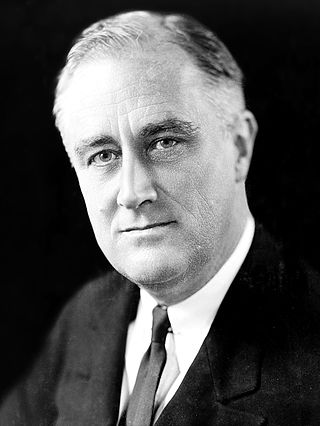
The 1932 United States presidential election was the 37th quadrennial presidential election, held on Tuesday, November 8, 1932. The election took place against the backdrop of the Great Depression. The incumbent Republican President Herbert Hoover was defeated in a landslide by Democrat Franklin D. Roosevelt, the governor of New York and the vice presidential nominee of the 1920 presidential election. Roosevelt was the first Democrat in 80 years to simultaneously win an outright majority of the electoral college and popular vote, a feat last accomplished by Franklin Pierce in 1852, as well as the first Democrat in 56 years to win a majority of the popular vote, which was last done by Samuel J. Tilden in 1876. Roosevelt was the last sitting governor to be elected president until Bill Clinton in 1992. Hoover became the first incumbent president to lose an election to another term since William Howard Taft in 1912, and the last to do so until Gerald Ford lost 44 years later. The election marked the effective end of the Fourth Party System, which had been dominated by Republicans. It was the first time since 1916 that a Democrat was elected president.

The mayor of New York City is elected in early November every four years, in the year immediately following a United States presidential election year, and takes office at the beginning of the following year. The city, which elects the mayor as its chief executive, consists of the five boroughs, which consolidated to form "Greater" New York on January 1, 1898.

The 1914 United States Senate elections, with the ratification of the 17th Amendment in 1913, was the first time that all seats up for election were popularly elected instead of chosen by their state legislatures. And thus it became the first time that they were generally scheduled on Election Day to coincide with the U.S. House elections. The 32 seats of Class 3 were contested in regular elections in 1914. Special elections were also held to fill vacancies. These elections occurred in the middle of Democratic President Woodrow Wilson's first term.

The 1912–13 United States Senate elections were held on various dates in various states. They were the last U.S. Senate elections before the ratification of the Seventeenth Amendment in 1913, establishing direct elections for all Senate seats. Senators had been primarily chosen by state legislatures. Senators were elected over a wide range of time throughout 1912 and 1913, and a seat may have been filled months late or remained vacant due to legislative deadlock. Some states elected their senators directly even before passage of Seventeenth Amendment. Oregon pioneered direct election and experimented with different measures over several years until it succeeded in 1907. Soon after, Nebraska followed suit and laid the foundation for other states to adopt measures reflecting the people's will. By 1912, as many as 29 states elected senators either as nominees of their party's primary or in conjunction with a general election.
The Socialist Party of Florida (SPFL) is the Florida state chapter of the Socialist Party USA, a democratic socialist party. The SPFL appeared on ballots during the 2012 US presidential election in Florida and 2014 Florida gubernatorial election. It is no longer a registered political party in the state.
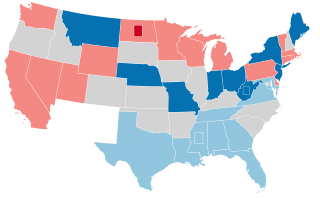
The 1910–11 United States Senate election were held on various dates in various states. As these U.S. Senate elections were prior to the ratification of the Seventeenth Amendment in 1913, senators were primarily chosen by state legislatures. Senators were elected over a wide range of time throughout 1910 and 1911, and a seat may have been filled months late or remained vacant due to legislative deadlock. However, some states had already begun direct elections during this time. Oregon pioneered direct election and experimented with different measures over several years until it succeeded in 1907. Soon after, Nebraska followed suit and laid the foundation for other states to adopt measures reflecting the people's will. By 1912, as many as 29 states elected senators either as nominees of their party's primary or in conjunction with a general election.
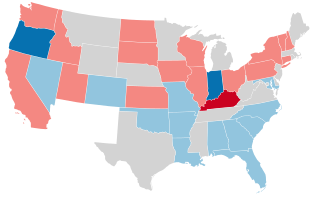
The 1908–09 United States Senate elections were held on various dates in various states. As these U.S. Senate elections were prior to the ratification of the Seventeenth Amendment in 1913, senators were primarily chosen by state legislatures. Senators were elected over a wide range of time throughout 1906 and 1907, and a seat may have been filled months late or remained vacant due to legislative deadlock. However, some states had already begun direct elections during this time. Oregon pioneered direct election and experimented with different measures over several years until it succeeded in 1907. Soon after, Nebraska followed suit and laid the foundation for other states to adopt measures reflecting the people's will. By 1912, as many as 29 states elected senators either as nominees of their party's primary or in conjunction with a general election.

The 1914 New York state election was held on November 3, 1914, to elect the governor, the lieutenant governor, the Secretary of State, the state comptroller, the attorney general, the state treasurer, the state engineer, a U.S. Senator and a judge of the New York Court of Appeals, as well as all members of the New York State Assembly and the New York State Senate, and delegates-at-large to the New York State Constitutional Convention of 1915.

The 1910 New York state election was held on November 8, 1910, to elect the governor, the lieutenant governor, the Secretary of State, the state comptroller, the attorney general, the state treasurer, the state engineer and two judges of the New York Court of Appeals, as well as all members of the New York State Assembly and the New York State Senate. The voters were also asked if they approved a $2,500,000 bond issue for the improvement and extension of Palisades Interstate Park, which was answered in the affirmative, with 349,281 For and 285,910 Against. A constitutional amendment which proposed to add two judges to the New York Court of Appeals and to increase the judges' salaries was rejected by a margin of only 292 votes, with 332,300 For and 332,592 Against.

The 1906 New York state election was held on November 6, 1906, to elect the governor, the lieutenant governor, the Secretary of State, the state comptroller, the attorney general, the state treasurer and the state engineer, as well as all members of the New York State Assembly and the New York State Senate.

The 1900 New York state election was held on November 6, 1900, to elect the governor, the lieutenant governor, the Secretary of State, the state comptroller, the attorney general, the state treasurer and the state engineer, as well as all members of the New York State Assembly and the New York State Senate.

The 1894 New York state election was held on November 6, 1894, to elect the governor, the lieutenant governor and a judge of the New York Court of Appeals, as well as all members of the New York State Assembly. Besides, a new State Constitution and four other constitutional amendments were proposed to the electorate, and were all accepted. Furthermore, the inhabitants of New York County and adjacent communities were asked if they wanted to join the proposed enlarged New York City, a project known as The Consolidation.

The 1917 New York City mayoral election replaced sitting mayor John P. Mitchel, a reform Democrat running on the Fusion Party ticket, with John F. Hylan, the regular Democrat supported by Tammany Hall and William Randolph Hearst.

The 1896–97 United States Senate elections were held on various dates in various states. As these U.S. Senate elections were prior to the ratification of the Seventeenth Amendment in 1913, senators were chosen by state legislatures. Senators were elected over a wide range of time throughout 1896 and 1897, and a seat may have been filled months late or remained vacant due to legislative deadlock. In these elections, terms were up for the senators in Class 3.

The 1904–05 United States Senate elections were held on various dates in various states, coinciding with President Theodore Roosevelt's landslide election to a full term and the 1904 House of Representatives elections. As these U.S. Senate elections were prior to the ratification of the Seventeenth Amendment in 1913, senators were chosen by state legislatures. Senators were elected over a wide range of time throughout 1904 and 1905, and a seat may have been filled months late or remained vacant due to legislative deadlock. In these elections, terms were up for the senators in Class 1.

Two United States Senate elections were held in Illinois on March 26, 1913. The two elections were interconnected through a compromise made to elect a Democrat in the regular election and a Republican in the special election.

The 1912 Illinois gubernatorial election was held on November 5, 1912. Incumbent second-term Republican governor Charles S. Deneen was defeated by Democratic nominee, former mayor of Chicago Edward Fitzsimmons Dunne.

The 1912 Georgia gubernatorial election was held on 2 October 1912 in order to elect the Governor of Georgia. Democratic nominee and former Acting Governor of Georgia John M. Slaton ran unopposed and subsequently won the election.
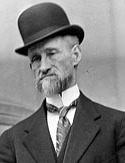
The 1908 Georgia gubernatorial election was held on 7 October 1908 in order to elect the Governor of Georgia. Democratic nominee Joseph Mackey Brown defeated Independent candidate Yancy Carter in a landslide.
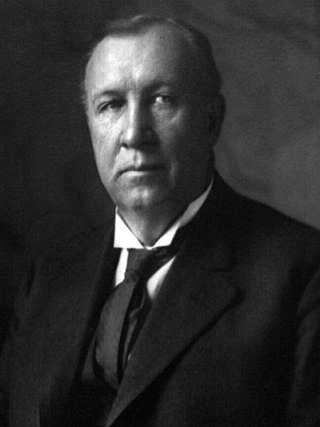
The 1910 Georgia gubernatorial election was held on 5 October 1910 in order to elect the Governor of Georgia. Democratic nominee and former Governor Hoke Smith defeated Independent Democratic candidate and incumbent Governor Joseph Mackey Brown and Socialist Party nominee C. O. Brown.



















